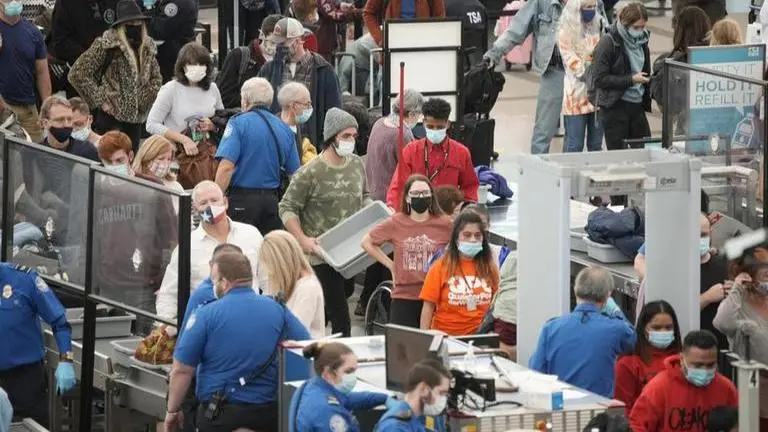Advertisement
Updated November 25th 2021, 06:47 IST
New COVID-19 study reveals social distancing alone ineffective to restrict spread of virus
COVID-19 airborne transmission is very random, according to a new study, implying that social distancing alone is ineffective in restricting its spread.

COVID-19 airborne transmission is possible at a short distance, according to a new study, implying that social distancing alone is ineffective in restricting its spread, reinforcing the significance of vaccination and face masks. The dispersion of droplets when people cough was quantified by a team of engineers from the University of Cambridge using computer modelling. According to the study, the researchers discovered that in the absence of masks, a person infected with COVID-19 can infect another person at a two-metre distance even when outside. Individual coughs vary widely, according to the researchers, and a so-called safe distance may have been established anywhere from one to three or more metres, depending on the risk tolerance of a particular public health authority.
The Engineering and Physical Sciences Research Council (EPSRC), which is part of UK Research and Innovation (UKRI), contributed to the study. The findings imply that social distancing is ineffective as a mitigation strategy on its own, and emphasise the necessity for vaccination, ventilation, and masks, particularly in the coming winter months. Despite the early pandemic's focus on handwashing and surface cleaning, it's been evident for over two years that COVID-19 spreads through airborne transmission. Coughing, speaking, or even breathing, when infected people expel bigger droplets that settle or smaller aerosols that float in the air, can spread the infection.
Fluid mechanics experts act as bridge between the virology of the emitter and receiver
Dr. Shrey Trivedi, the Indian-origin first author of the study published in the journal Physics of Fluids this week, explained that virology plays a role in how the sickness spreads. But, according to him, there's also fluid mechanics to consider, such as what happens to the droplets after they've been evacuated, which is where the researchers come in. As fluid mechanics experts, they act as a link between the virology of the emitter and the virology of the receiver, and they may assist with risk assessment, according to Trivedi.
According to the study, when a person coughs without a mask on, the majority of the bigger droplets land on nearby surfaces. Smaller droplets hanging in the air, on the other hand, can swiftly and readily spread beyond two metres. The quality of the room's airflow will determine how far and how soon these aerosols spread. There is a lot of variation in individual coughs, in addition to the variables surrounding mask-wearing and ventilation. According to the researchers, while the two-metre rule is an effective and easy-to-remember public safety message, given the enormous number of factors connected with an airborne virus, it is not a guarantee of safety. While vaccination, ventilation, and masks are not 100% effective, they are critical in containing the infection. The researchers are continuing their work with comparable simulations for settings like lecture halls, which can help assess the danger as people spend more time indoors.
(With inputs from agencies)
Image: AP
Published November 25th 2021, 06:47 IST
